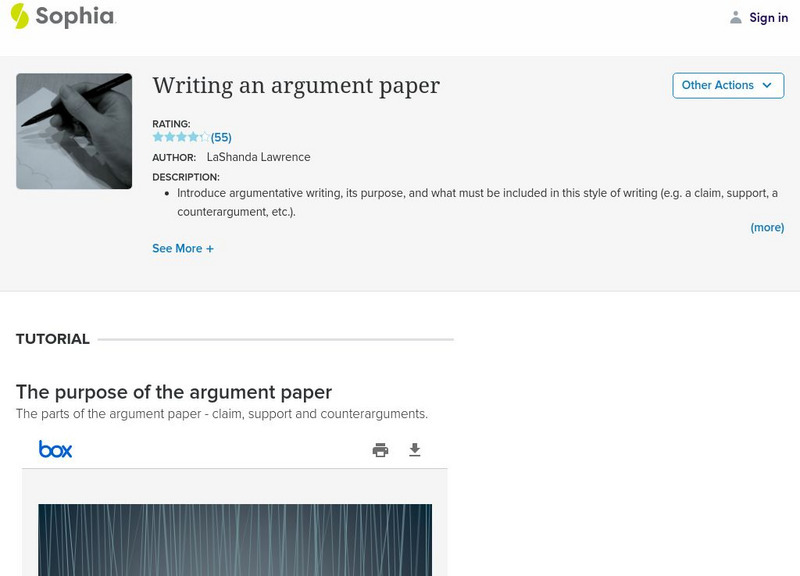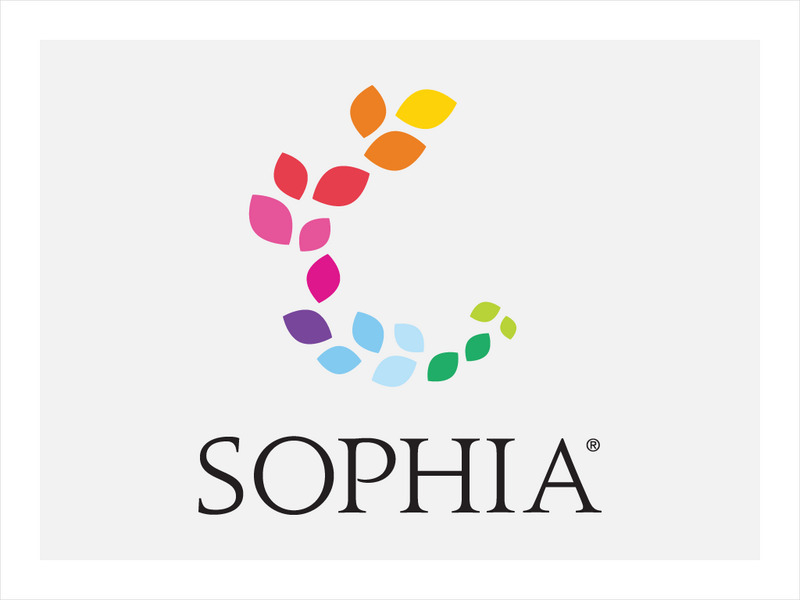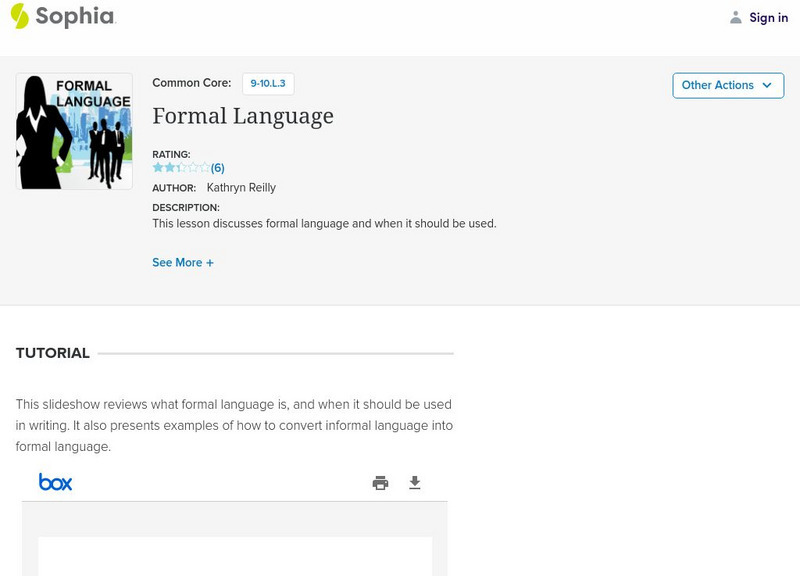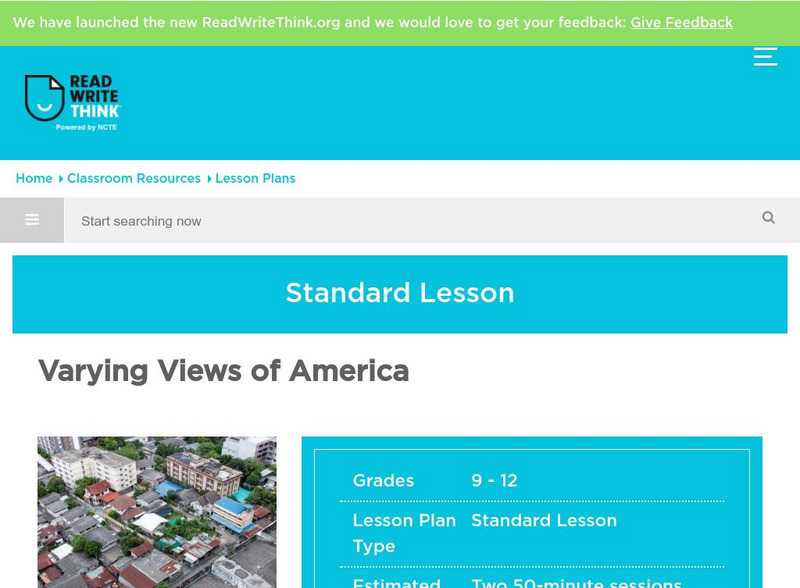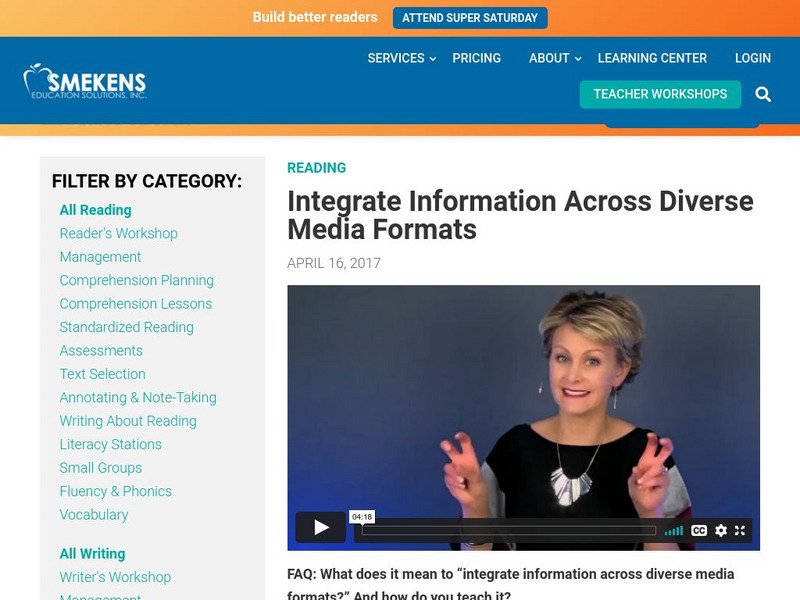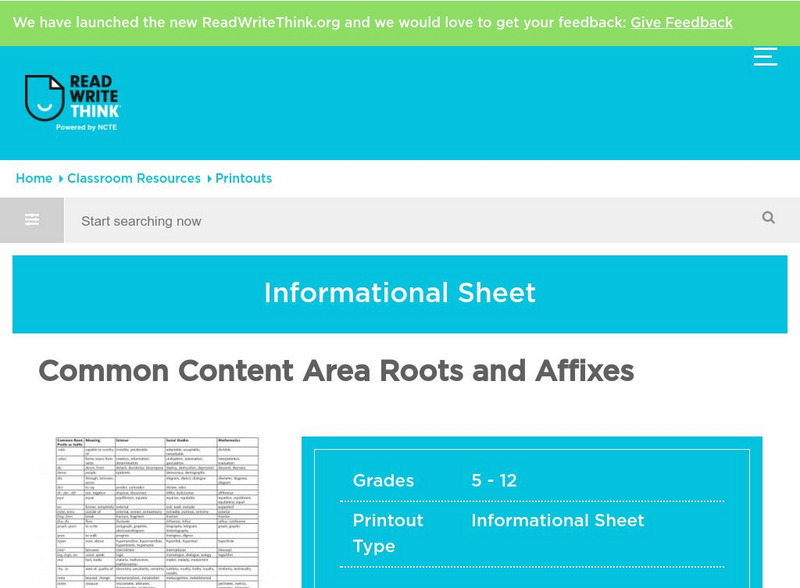Cambridge Rindge & Latin School
Cambridge Rindge & Latin School: Brainstorming Research Questions
An excellent tip sheet for using brainstorming techniques for writing research papers. It also gives great examples of factual and interpretive questions. It also provides links to very helpful tip sheets with examples and a worksheet...
Online Writing Lab at Purdue University
Purdue University Owl: Starting the Writing Process
Getting started on a paper or story always seems to be the greatest obstacle. Learn some simple prewriting strategies to overcome this common problem. Use the links on the left to work through each step of the writing process. W.9-10.5...
Other
Plu: Designing and Delivering Multimedia Presentations: Why Use Visuals?
The advantages to incorporating visuals into a multimedia presentation are explained. SL.9-10.5 Audio Visuals. CCSS.ELA-Literacy.CCRA.SL.5, SL.11-12.5 Audio Visuals
Sophia Learning
Sophia: Evaluating the Connotation
This lesson focuses on evaluating the connotation of a vocabulary word. It defines connotation and gives an example. It details three steps: read the word in context, determine the tone of the overall reading, and compare the tone with...
Other
Responsible Thinking: Analyzing Arguments and Evidence
Contains many points to consider when analyzing someone's arguments and evidence, such as the hidden assumptions, cultural assumptions, and testability. Each is explained in a short paragraph with a link to additional discussions on...
Sophia Learning
Sophia: Concluding Transition Words
A screencast lesson [2 mins, 32 secs] introducing transition words used to conclude an idea and providing examples of how to use such transitions in concluding sentences. W.11-12.1c Transitions/Cohesion CCSS.ELA-Literacy.WHST.6-8.2.c
Lumen Learning
Lumen: Boundless Communications: Credibility Appeals
In this Boundless Communication, students will learn about the importance of credibility in public speaking. There are four sections: defining credibility, types and elements of credibility, building credibility, and ethical usage....
University of Missouri
University of Missouri: Clear Writing: Ten Principles of Clear Statement
This page features a list of ten principles that lead to writing clearly and concisely, such as avoiding unnecessary words, writing like you talk, writing to express and not to impress, and the like. It also discusses "fog indexes" to...
University of Michigan
Univ of Michigan: 4 Ps: Plan, Prepare, Practice and Present Your Speech [Pdf]
An outline for designing an effective speech is provided on this site. Steps included in the outline consist of the following: planning to write the speech; preparing to present the speech; and delivery of the speech. SL.9-10.1a...
Sophia Learning
Sophia: Writing an Argument Paper
In this slideshow tutorial, students will review how to write an argument paper. Students will review the parts of the argument paper, which include the thesis, claim, support, and counterarguments. CCSS.ELA-Literacy.CCRA.W.1, W.11-12.1a...
Sophia Learning
Sophia: Supporting Details Explained
This slideshow focuses on supporting details; it discusses their purpose, the audience, and the point to be made. It lists the five most common types of supporting details: facts, statistics, opinions, examples, and personal observations...
Other
Visual Thesaurus: Shades of Meaning
In this lesson, small groups of students will compete in a "shades of meaning" contest to see which group can use the Visual Thesaurus to help them match words with similar definitions but different connotations in the shortest amount of...
E Reading Worksheets
E Reading Worksheets: Text Structure Activities
Numerous links related to analyzing text structures are provided on this site. Lesson plans, PowerPoint slides, graphic organizers, rubrics, and quizzes related to text structures are also provided to support students while analyzing...
Sophia Learning
Sophia: Grammar and Formality
This lesson goes over ways in which the correct use of grammar may be perceived as formality. CCSS.ELA-Literacy.CCRA.L.1 and CCSS.ELA-Literacy.CCRA.SL.6, L.11-12.1a Gram/Usage changes
Sophia Learning
Sophia: Formal Language
This slideshow lesson focuses on formal language. It reviews the basics of formal language and the need to know your audience. It explains how to change various types of informal language into formal language and provides examples....
Sophia Learning
Sophia: Critical Reading as a Learning Strategy
This tutorial focuses on critical reading using a downloadable PowerPoint presentation, "Critical Reading 101," which includes separating fact from opinion, 6 propaganda techniques, and 6 common fallacies in reasoning. Also provided is...
Colorado State University
Colorado State University: How Thesis Is Related to Purpose
This table shows the progression from topic to purpose to thesis, as well as explaining the role of the thesis statement. Use the links on the right to get to the specific information you are interested in including forms to fit purpose...
Sophia Learning
Sophia: Clarity: Avoiding Assumptions
This lesson discusses avoiding assumptions about the reader. CCSS.ELA-Literacy.WHST.6-8.4
Other
National University of Singapore: Preparing for Presentations
Some tips are presented on how to properly prepare the content of and structure a presentation. SL.9-10.1a Prepared/Discuss. CCSS.ELA-Literacy.CCRA.SL.4, SL.11-12.4 Presentation
Sophia Learning
Sophia: Referencing the Author's Purpose
This lesson explains how to reference an author's purpose when answering a reading comprehension question. This tutorial shares an audio version of the lesson's content. [3:14] RI.11-12.6 Eval Purpose, Rhetoric, Style
ReadWriteThink
Read Write Think: Poetry: Varying Views of America
Lesson allows students to examine the various views of American perspective through studying three poems by diverse poets: "I Hear America Singing" by Walt Whitman, "I, Too, Sing America" by Langston Hughes, and "On the Pulse of Morning"...
Texas Education Agency
Texas Gateway: Evaluate Tone in Various Media for Audiences and Purposes
This lesson features several weather videos, both real and created, to help students understand how information and the tone changes based on the audiences and the purposes for the presentation.
Other
Smekens: Integrate Information Across Diverse Media Formats
Read about strategies to help students integrate information across diverse media formats. Includes video. [4:18]
ReadWriteThink
Read Write Think: Common Content Area Roots and Affixes
This table offers 50 or so common roots, prefixes, and suffixes, their definitions, and sample words in the content areas. L.9-10.4b Patterns/word changes
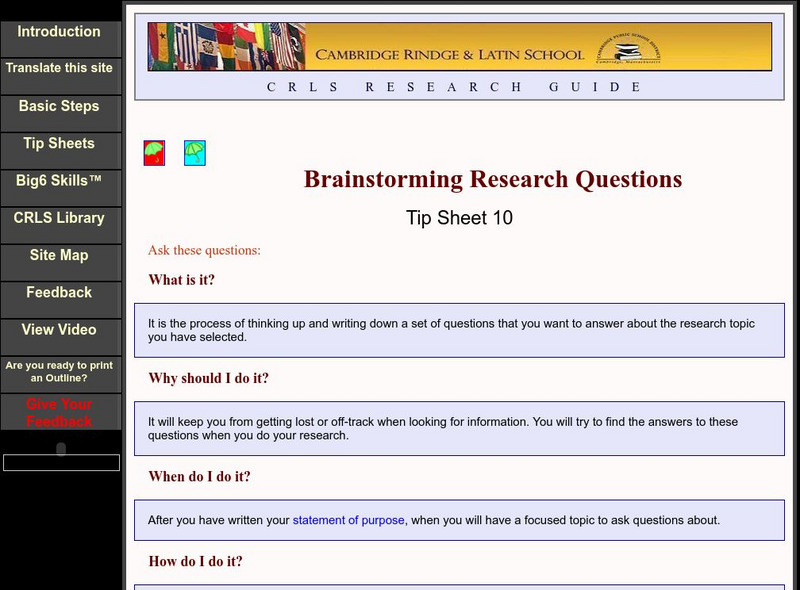



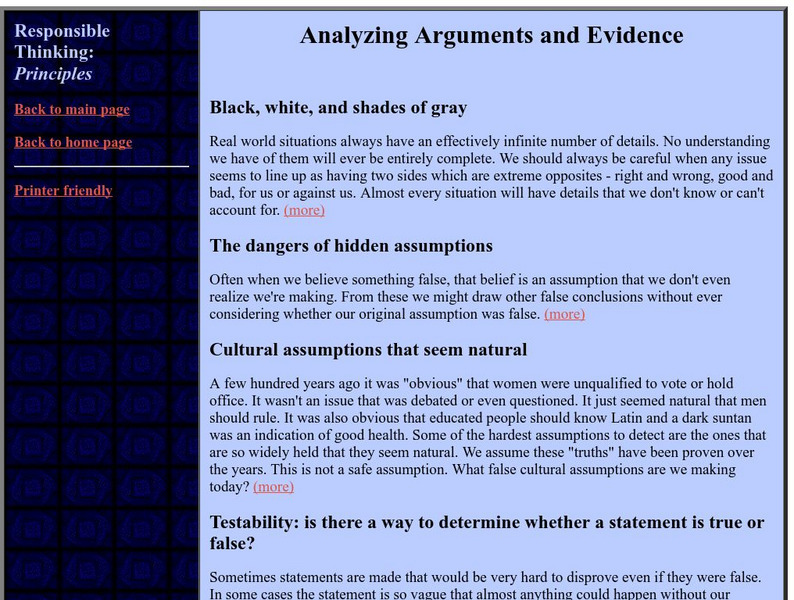



![Univ of Michigan: 4 Ps: Plan, Prepare, Practice and Present Your Speech [Pdf] Handout Univ of Michigan: 4 Ps: Plan, Prepare, Practice and Present Your Speech [Pdf] Handout](https://content.lessonplanet.com/knovation/original/233880-0709742bec31ef68ca8e08d41f97bb61.jpg?1661556076)
